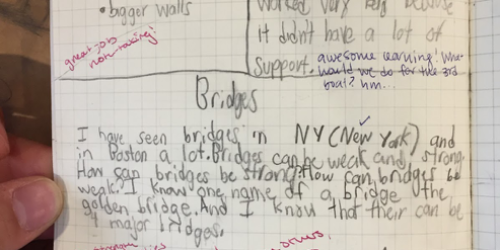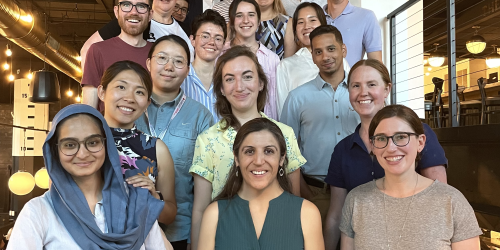by Elissa Milto, CEEO Director of Outreach
Dr. Daniel Hannon received a CEEO Innovation Grant from the Center for Engineering Education and Outreach to run a Maker workshop in order to help develop social awareness in adolescents with autism spectrum disorder (ASD). He and Elissa Milto, CEEO’s Director of Outreach, structured this pilot workshop to look at understanding how adolescents with ASD gain social skills to help them more fully integrate into society, to interact meaningfully with one another, and to become better prepared for jobs in the future. There is very little research on adolescents with ASD so the researchers wanted to better understand how to support this age group to become productive members of society.
Four adolescent males participated in the workshop, which was held once a week for two hours over the course of 8 weeks. In order to provide structure and help the participants get to know each other, the beginning protocol included washing hands when they arrived and then filling out questionnaires. The questionnaires helped them bond and scaffolded interactions so they would ask each other questions that they might not ask each other on their own. Questions ranged from those about their hometown, age, and if they had ever been to Disneyworld.
Each week the participants were given an engineering challenge on which they worked for the majority of the session. The challenges, which helped the students gain skills with specific tools, were client-centered helping them consider others’ points of view. Example design challenges are a fidget toy that took into account their partner’s preferences and a clock for visually impaired users. The last fifteen minutes of the session was left for each participant to fill out a form to reflect on his day and his interactions with his partner. One adult helped each pair of participants, and the two workshop leaders observed from the side of the room.
During the first few weeks of the workshop, the students tended to focus on their own opinions and experiences rather than that of their client or partners. Adults often had to intervene and guide the boys to stay on topic and listen to each other’s ideas. However, as the study progressed, the participants became more comfortable with each other and began to have conversations that were not scripted by the surveys or prompted by the adults. In the last few weeks of the workshop adults had to intervene less frequently since the participants were working more cohesively and asking each other for their feedback. When filling out the questionnaires they even began guessing their partner’s responses. By the end of the workshop series, each pair of students was able to divide tasks that needed to be done and then check to make sure that their partner liked what they were doing. For the final project, the students were asked to create a dancing robot for one of the research assistants who was a dancer. When one pair was building their robot (below), they split up tasks and high-fived each other when one part was complete. While presenting their robot to the group, the two boys stood up and began to dance with the robot.
 The researchers felt that this pilot study was successful and would like to apply for additional funding to further study adolescents with ASD. One follow-up workshops would be children with autism to work with typically developing children the same age, perhaps in a larger classroom setting. Researchers were surprised at how well the students did socially and how productive they were during the workshop, and would like to apply their findings to additional settings in hopes of better understanding strategies that can be implemented and generalized to academic and vocational settings. Thus, helping students with ASD better integrate into society and hold meaningful and enjoyable jobs.
The researchers felt that this pilot study was successful and would like to apply for additional funding to further study adolescents with ASD. One follow-up workshops would be children with autism to work with typically developing children the same age, perhaps in a larger classroom setting. Researchers were surprised at how well the students did socially and how productive they were during the workshop, and would like to apply their findings to additional settings in hopes of better understanding strategies that can be implemented and generalized to academic and vocational settings. Thus, helping students with ASD better integrate into society and hold meaningful and enjoyable jobs.



